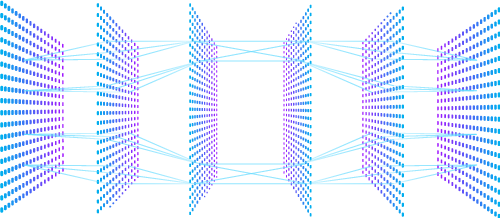What is a Noise Vector?
A Noise vectors is a key component in AI art generation, particularly in techniques like Generative Adversarial Networks (GANs) and Variational Autoencoders (VAEs). In this context, a noise vector refers to a set of random values that is used as input for the generative model.
The purpose of a noise vector in AI art generation is to introduce randomness into the generative process. The generative model uses the noise vector as a starting point to generate new content, which is then refined through a series of iterations. By introducing randomness into the process, the generative model is able to create new, unique content that is not present in the original training dataset.
In GANs, the noise vector is typically used as input for the generator network, which is trained to generate new content. The generator takes the noise vector as input and produces a new image, which is then evaluated by the discriminator network. The discriminator is trained to distinguish between real images from the training dataset and the images generated by the generator. The generator is then updated to produce images that are more likely to be classified as real by the discriminator.
In VAEs, the noise vector is used to generate a random sample from the learned distribution of the latent space. The latent space is a mathematical representation of the input data, which is learned by the encoder network. The VAE is trained to minimize the difference between the original input data and the data generated by the decoder network, which takes the noise vector and the latent representation as input.
Noise vectors can also be used in StyleGAN, where they are combined with the learned latent space to generate new images. StyleGAN allows for the manipulation of specific features, such as the color of an object or the shape of a face, by adjusting the values of the noise vector.
In conclusion, noise vectors are a critical component of AI art generation, allowing for the introduction of randomness into the generative process. They are used in a range of techniques, including GANs, VAEs, and StyleGAN, to generate new, original content that is not present in the original training dataset. Without noise vectors, the generative process would be limited to the original training data and the potential for AI art generation would be severely limited.





